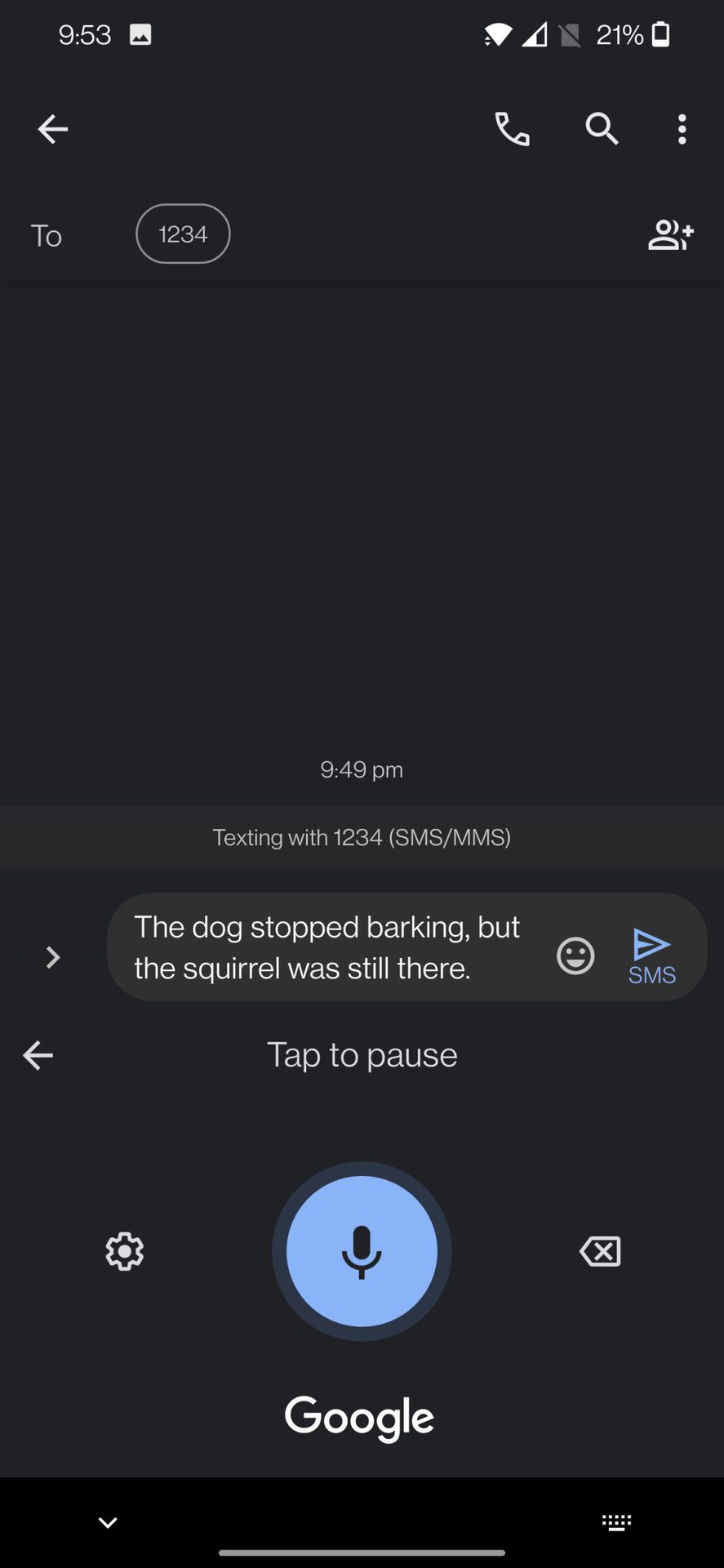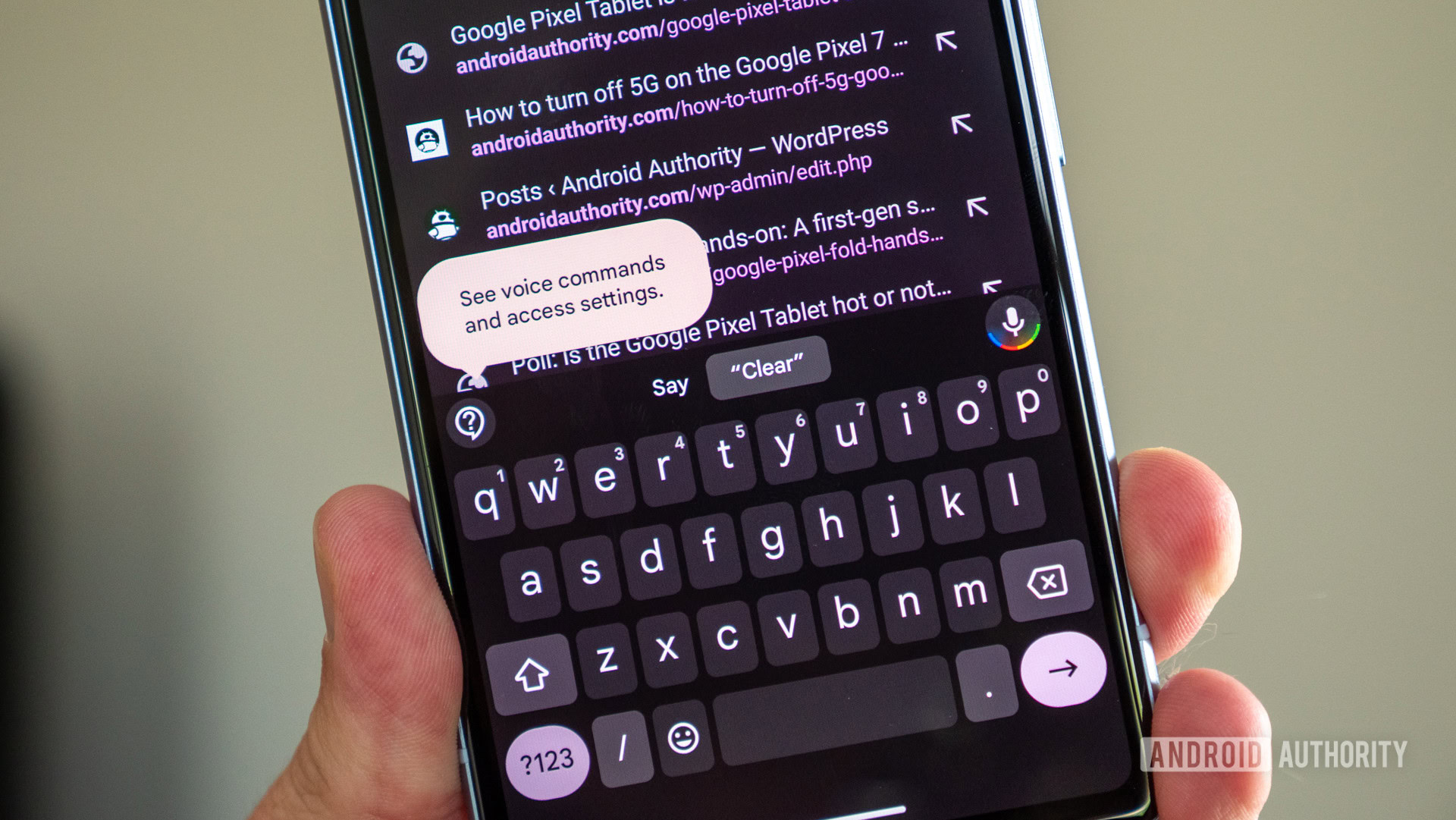Affiliate links on Android Authority may earn us a commission. Learn more.
How to use voice to text on Android
Published onFebruary 6, 2025
If you’ve typed up a long text message on your smartphone, you will know that smartphone keyboards can sometimes be finicky. The keyboard may be sluggish, or your fingers might be too large for the small buttons. In any case, voice-to-text on Android can help save you the hassle and time of typing everything manually. Voice-to-text is a feature that allows you to speak what you want to write, and your smartphone will write it for you. Even if you’re a fast texter, saying what you want to write is usually quicker. Here’s how the voice-to-text feature works on Android devices and how to get the most out of it.
QUICK ANSWER
To use voice-to-text on Android, open the keyboard in your chat or text app and tap the microphone icon. Start speaking, and the phone will type out what you say.
JUMP TO KEY SECTIONS
Editor’s note: We formulated these instructions using a Google Pixel 7 running Android 14. Remember that some steps may differ depending on your specific device and software version.
How do I activate voice-to-text on Android?
Voice-to-text will already be enabled on your device. You can make sure your language is downloaded for improved performance, though.
How to download voice-to-text languages:
- Open the Google app.
- Tap on your profile icon.
- Go into Settings.
- Select Voice.
- Hit Offline speech recognition.
- Check your language is downloaded.
- You can go to the All tab to find and download other languages.
Voice-to-text works with many different languages. For languages with accents or more characters in the alphabet, voice-to-text can be easier to use than the keyboard.
How to use voice-to-text on Android
You can use voice to text with any app you type in. Here’s how it works:
- Go to any app or website. Tap on a text field to start typing. This will pull up your on-screen keyboard.
- You should see a microphone icon. Tap on it. This will start the voice-to-text feature.
- Start speaking. The feature should type out what you’re saying.
If you want to pause speaking for a little bit, all you have to do is tap the microphone. Tapping it once more will start the voice-to-text feature again.
When you use voice-to-text on Android, it won’t automatically fill in punctuation for you. You need to dictate punctuation whenever you want it in what you’re typing. Here are a few of the most common speech commands for punctuation:
- Period/full stop
- Question mark
- Exclamation point
- Comma
- New line
- New paragraph
For example, take a look at this sentence: The dog stopped barking, but the squirrel was still there. To put this sentence into a text, you would need to say: The dog stopped barking (comma) but the squirrel was still there (period).

Once you finish speaking, you can tap the microphone to stop recording. If voice-to-text hears the wrong word or you want to change what you said, you have to go back and adjust it manually. You can give a voice command to replace one word with another, but it’s typically easier to manually type the replacement word.
How to improve voice-to-text on Android
Voice-to-text is fantastic, but it’s not always perfect. You can do a few things to improve your experience and make the voice-to-text feature more reliable.
Make sure you speak slowly. If you talk too quickly, there’s a good chance your phone won’t pick up everything you said, and you’ll have to start all over. Also, speak clearly. Enunciate your words more than you usually might, so there’s no mistaking what you’re trying to say.
Lastly, make sure you are in a low-traffic space with minimal noise. For example, if you’re at a concert, voice-to-text won’t work because your smartphone can’t clearly distinguish your voice from your surroundings.
How to use Google Assistant voice typing

Google announced Assistant voice typing with the Google Pixel 6 series. It’s an improved version of voice-to-text, but it uses Google’s Tensor chipsets to make significant improvements. This makes Assistant voice typing a Pixel-only feature, at least for now.
Google Assistant voice typing can add punctuation without the user requesting it, for example. You can also actively type while voice typing, and make corrections to the already-typed text. The feature is also available on Pixel 7 and Pixel 8 devices, and it’s further improved with the addition of more languages, a 2.5x speed increase, smart emoji suggestions, better proofreading, and more.
Make sure Google Assistant voice typing is active:
- Launch any app you can type in.
- Tap on the text box and let the Gboard keyboard pull up.
- Hit the Settings gear icon.
- Select Voice typing.
- Turn Assistant voice typing on.
How to use Assistant voice typing:
- There are two ways to activate Assistant voice typing:
- Open an app you can type in, tap on a text box, and tap on the microphone icon.
- Open an app you can type in, tap on a text box, and say, “Hey Google, type.”
- Start saying what you want to type.
- You can say these commands while voice typing:
- Delete the last word: “Delete last word.”
- Delete the last sentence: “Clear.”
- Clear the whole text: “Clear all.”
- Send the message: “Send.”
- To fill out the following open field in a form: “Next.”
- Add an emoji: Say the emoji’s name, like “Smiley emoji.” On the Pixel 7, you can be more vague, if you don’t know the exact name. Try something like “emoji that’s smiling.”
- You can always say “Stop” to cancel Assistant voice typing.
FAQs
Any device with Android 7.0 or higher should be able to use all voice-to-text features.
Assistant voice typing is a feature currently reserved for Pixel 6, Pixel 7, or Pixel 8 series phones. It’s also available on the Pixel Fold.
You can think of Assistant voice typing as a smarter version of text-to-speech. It can interpret where punctuation should go and place it for you. It can also make emoji suggestions, send messages, and you can use voice commands to make edits.
Assistant voice typing is still in its infancy, so it only works in a handful of languages. These include English, German, Japanese, French, Italian, and Spanish.